“Tough market conditions” not limited to Core Lithium
Citing an 85% fall in the price of spodumene concentrate over the last year, which includes a more acute decline of 50% since October, Core intends to “temporarily” suspend mining operations at Grants Pit – currently its only producing asset. Mining would recommence “should market conditions improve”.
Core’s development project, BP33 which is presently at the early works stage, will be placed on care and maintenance, but work continues on an updated pre-Feasibility study. On exploration, Core noted it had completed its 2023 campaign, and it continues to analyse this data. Results would be announced in the “coming months”.
The company plans to update the market with revised operating costs, exploration, studies, and capital expenditure guidance for the rest of the 2024 financial year when it releases its December quarterly report at the end of this month. An impairment of the carrying value of Finniss was flagged, with details to be released in Core’s first half results due in February.
No surprises here, thanks Kerry! 👍
At the time of that article, the price of spodumene concentrate was around US$1,400-US$1,800 a metric tonne depending on which data provider you were looking at. Kerry noted core produced at around $1,225 a metric tonne in the September quarter. Spodumene concentrate prices are now around US$950-US$1,000 a metric tonne. The maths speaks for itself. (If you’re looking for daily lithium prices and charts, I post these daily on X / Twitter!).
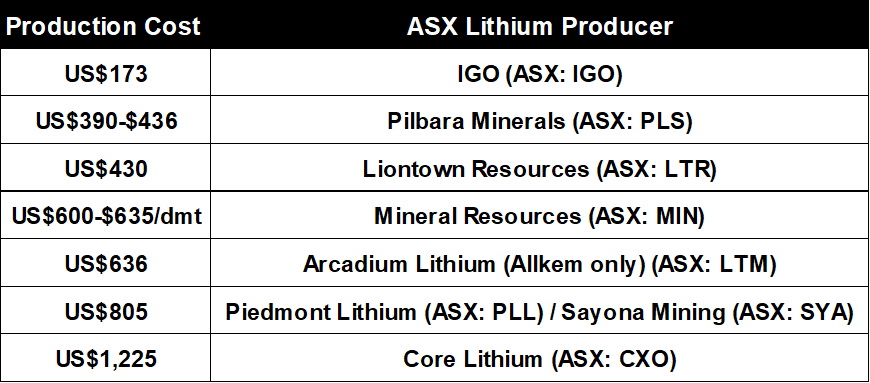
But this assumes spodumene concentrate prices won’t go lower. As a technical analyst, and more specifically a trend following technical analyst, I have to say I have some reservations over this possibility when I look at the chart below.
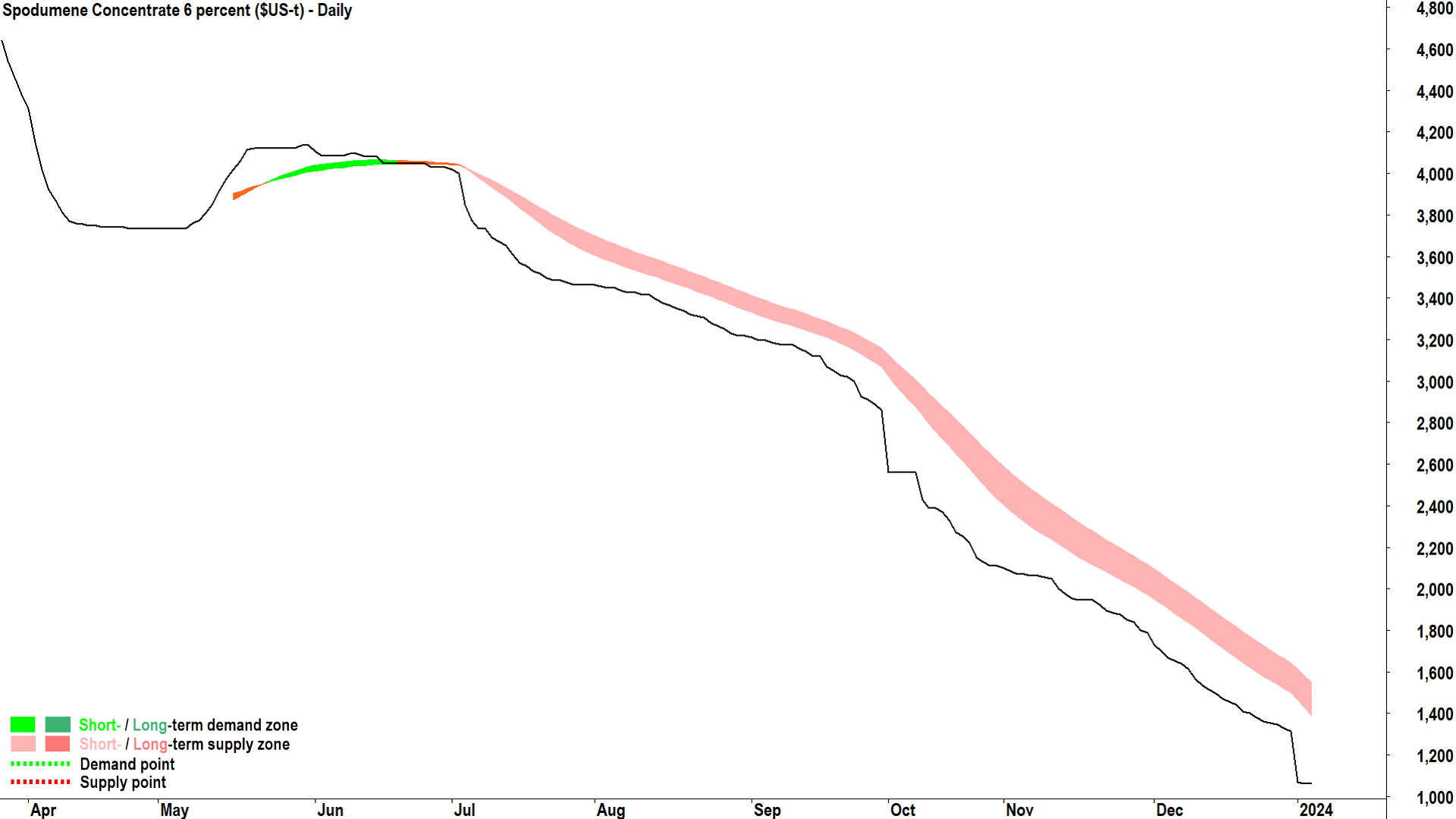
Smacks of the uranium commodity price cycle
Commonly referred to as the “commodity price cycle”, it describes the process of scarce resources rising in price during times of increased demand. Often demand suddenly explodes for whatever reason (e.g. Tulips are pretty, everyone wants a Tesla etc.) causing prices to skyrocket. Speculators looking to strike it rich often push prices exponentially higher.
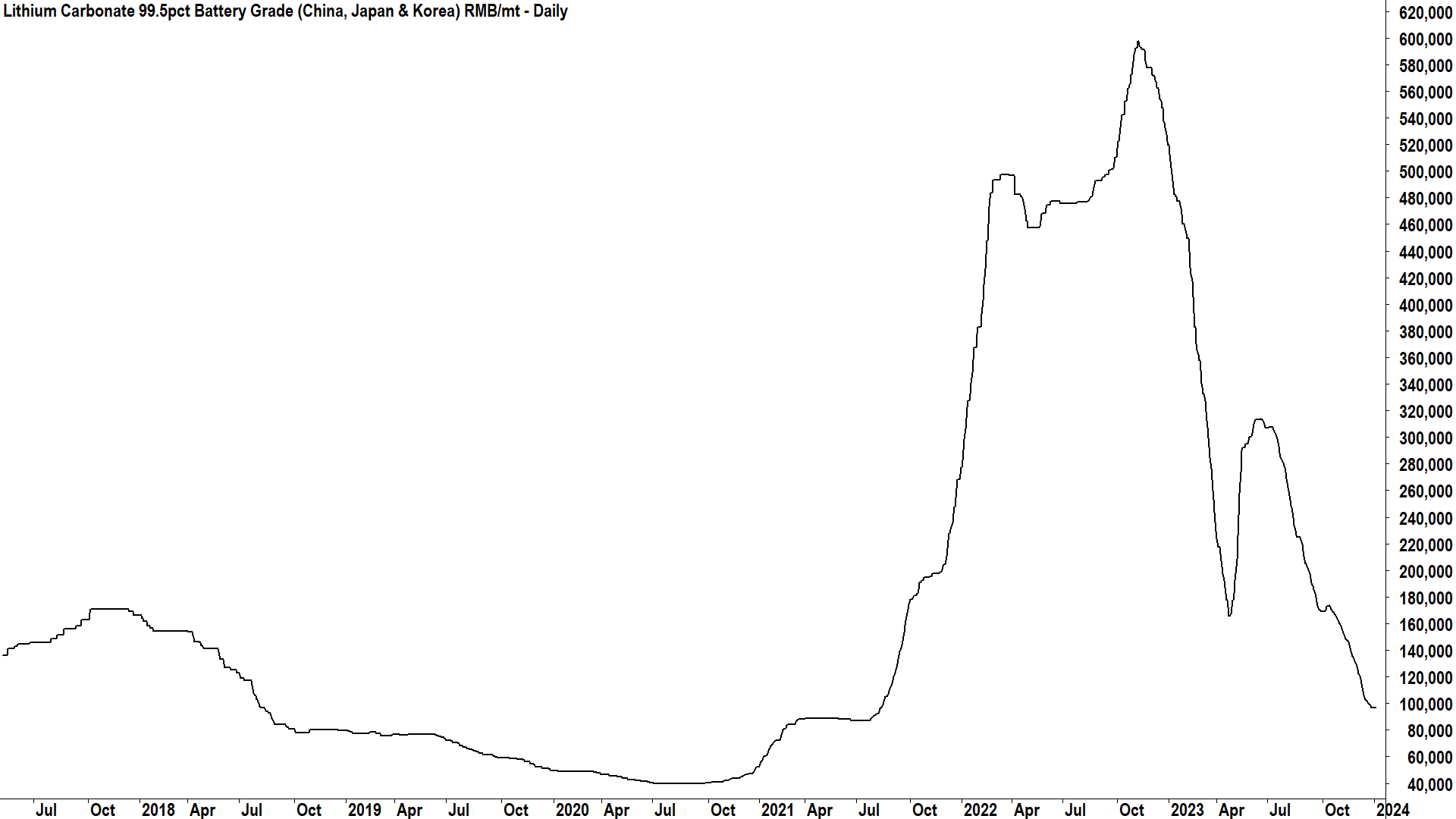
Long story short, often we end up with a supply glut which dutifully ends the price boom. Often, the price falls so far it becomes uneconomic to produce the commodity, which causes many producers to scale back production (i.e., Core Lithium), and others go out of business completely (let’s hope not!). At this point, supply declines and sets the market up for the next commodity price cycle!
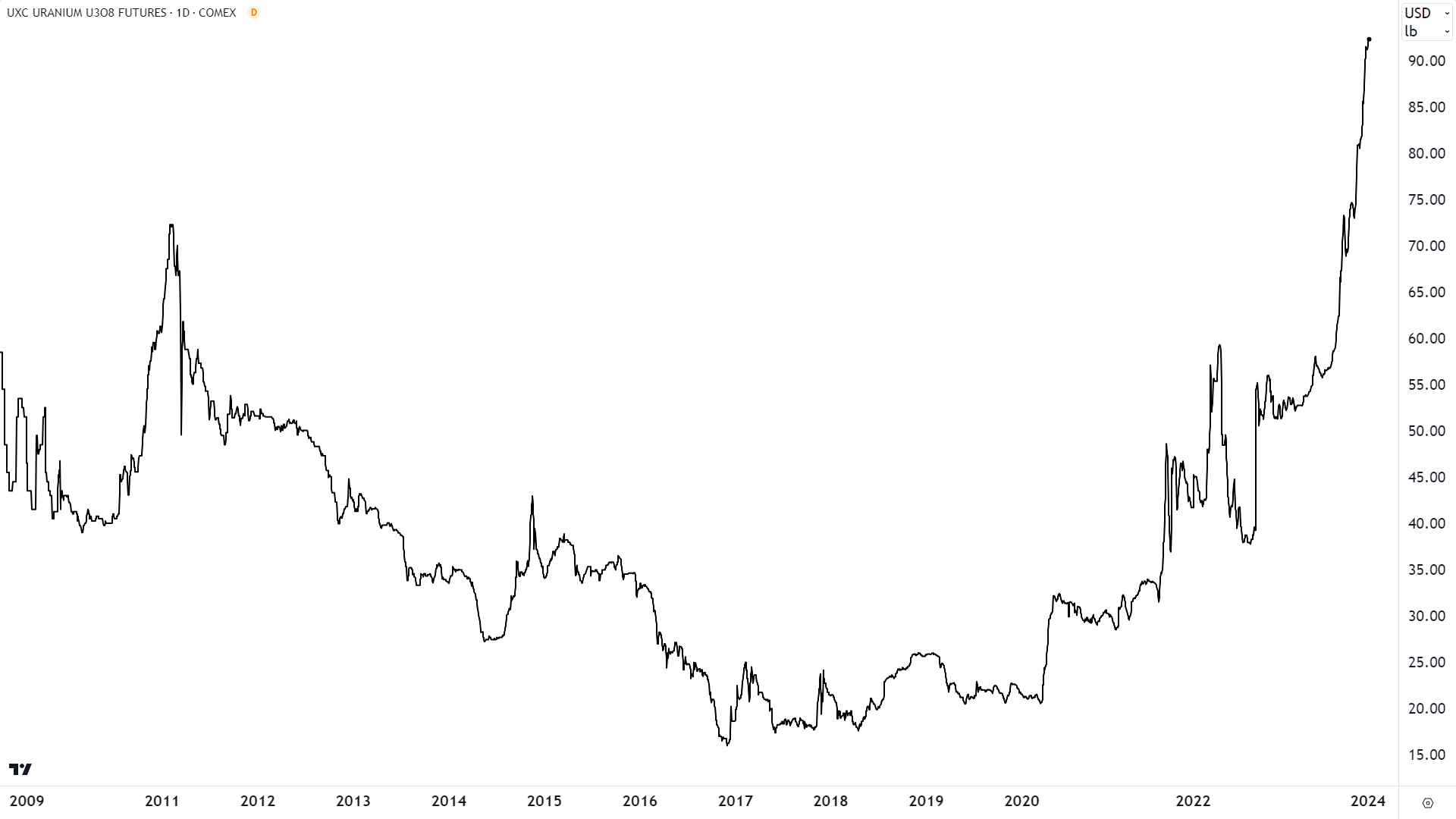
On this, I draw upon a chart I recently saw on Market Index’s sister site Livewire, in an article by Mark Gardner from MPC Markets. Mark suggests the market for lithium minerals could remain in surplus until 2029. From there though, he notes a combination of increasing demand from the EV industry and an acute lack of long term production would likely swing the lithium minerals market back to substantial deficit by 2030 which could get “ugly”.
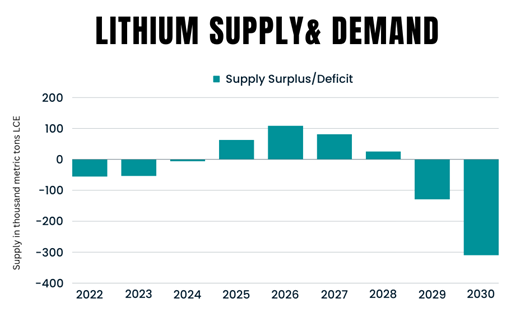
There are many similar charts of near-term surplus / long term deficit for lithium minerals, and as a student of markets for over thirty years now, I fully expect the lithium price cycle will turn eventually. This means we will at some stage once again read headlines about booming lithium prices. The problem in my experience is, the turn may come after many investors have given up and moved onto the next shiny new commodity price cycle!
This article initially appeared on Market Index on Friday 5 January.
3 topics
8 stocks mentioned

